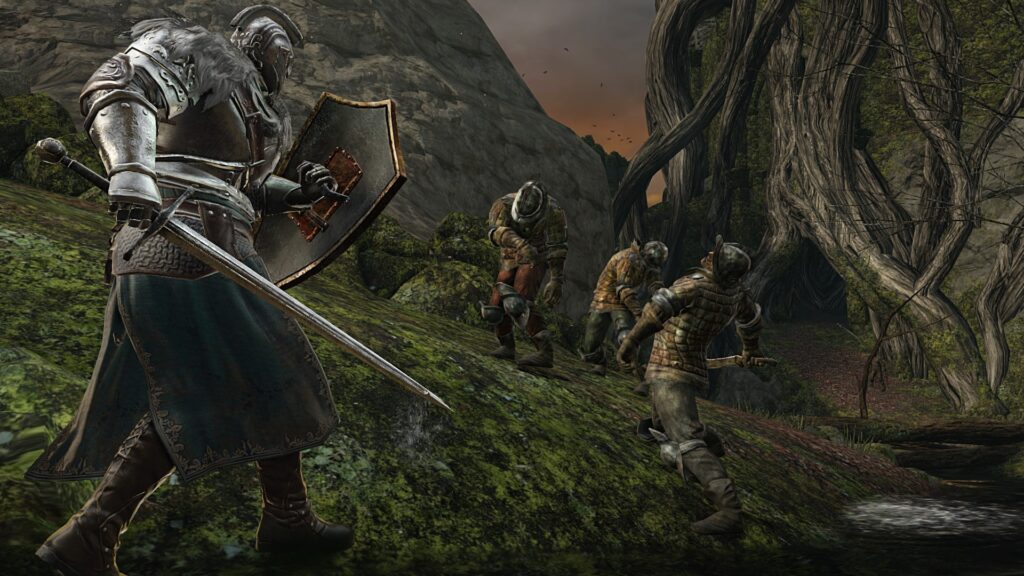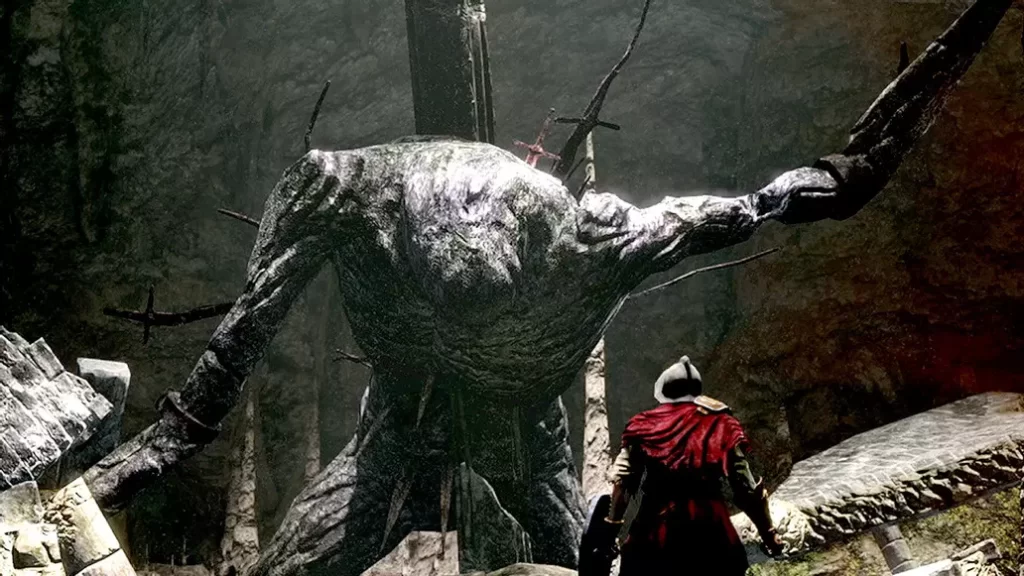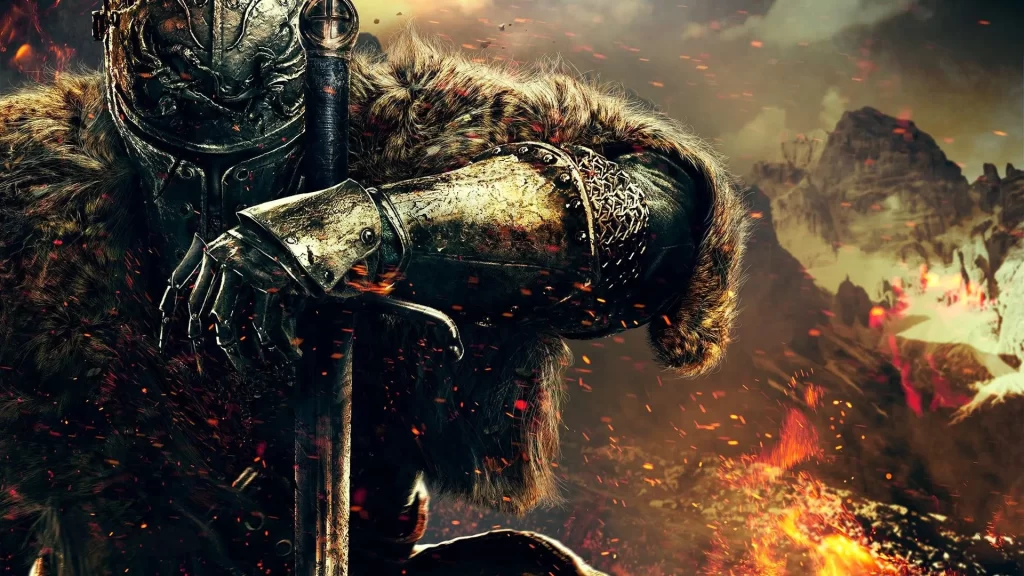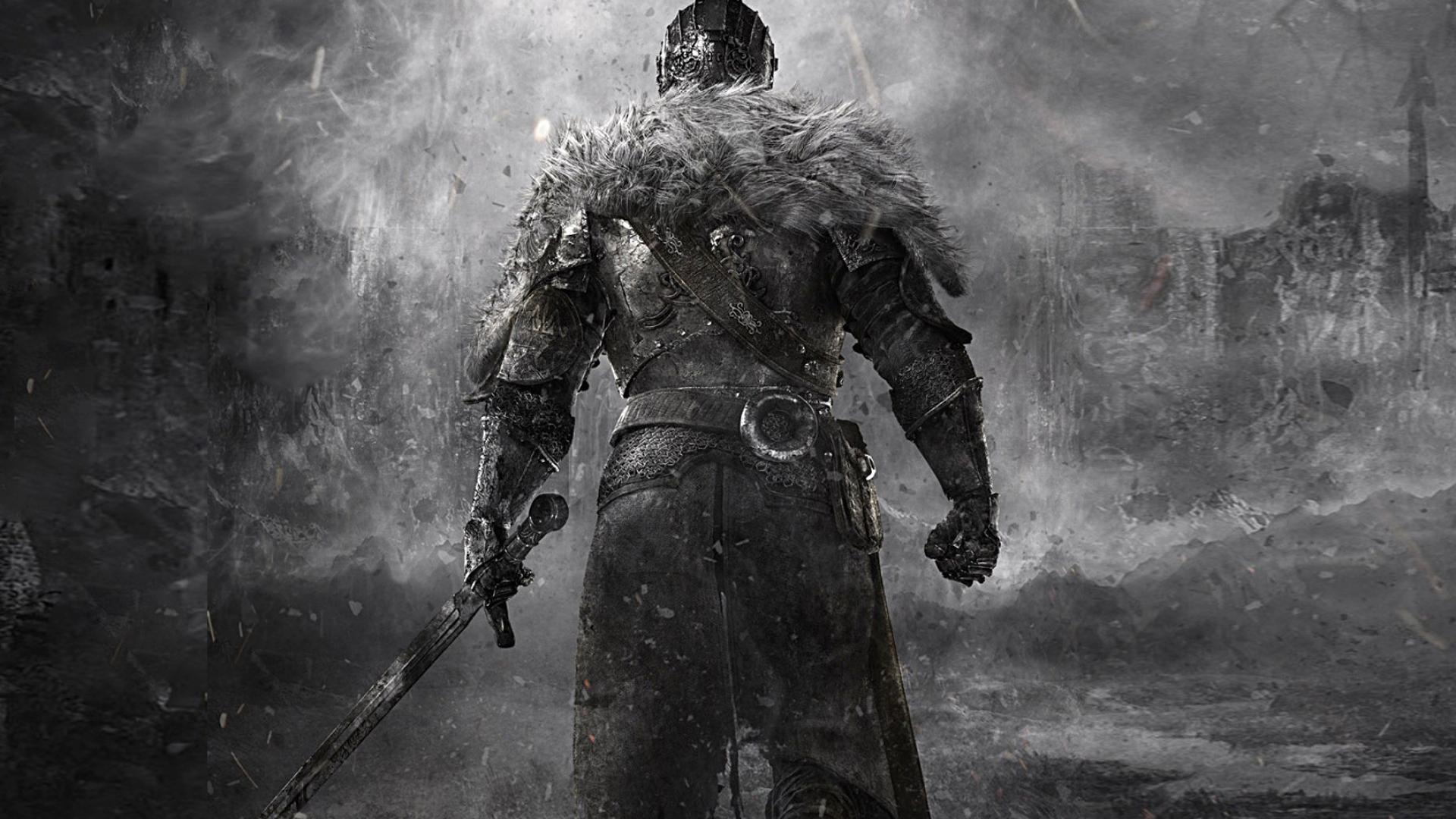First, make no mistake, the brutal action-RPG Dark Souls II is a masterpiece of the form, well worth your time, your money, your devotion. It’s also worthy of criticism, heralded by anticipation and dread. There’s that old-familiar dread, of endless deaths, baroque explanations, aimless wanderings, lost progress, and seemingly unwinnable encounters. Yet, there’s also an opposing trepidation that those very fears won’t be rationed out in the proper proportion. We’ve weathered the world called Drangleic, and though it be a paler fire in some regards, the spark’s still here, and the heat is intense.
Make no mistake, the brutal action-RPG Dark Souls II is a masterpiece of the form, well worth your time, your money, your devotion.
Dark Souls II is immediately obsessed with the moment-to-moment. Your selected character type will have a huge influence over the early portions, and fighting for your life in the game’s early hours is harrowing due to the near absence of effective shields and weighty drains on stamina. Everything from running to fighting to casting spells takes something out of you, leaving you vulnerable if you expend too much of your recharging stamina meter in a short time. Combat is lethal — your undead hero often facing multiple opponents at once, and every minute movement bears a consequence. The estus flask that keeps you going with its healing liquid holds only a single swig at first, so you’ll rely on consumable items as you learn the ropes. There are repeatable tutorials, but wandering through the early open zones will supply true education.

The open-world design offers many avenues at the offset that will splinter off, shifting to point-to-point progression in the latter part of the quest, though your path will never quite feels like a straight shot. Make a note of locked doors and strange statues as hotspots for future excavation. Flitting across the world to investigate a lead after hitting a roadblock is simple since you can warp to any bonfire — essentially a checkpoint and temporary respite — from any other.
Compared to the sublimely interconnected world of Lordran in Dark Souls, there are fewer shortcuts and looming structures here to mold the world of Drangleic into a cohesive vision.
This useful affordance helps prop up the ideas of progression, and the world’s open flow, unfortunately, obscures what makes an open world delightful. If you choose, you can simply walk from any point to another without seeing a single loading screen, but the way the world is stitched together often feels like patchwork. Compared to the sublimely interconnected world of Lordran in Dark Souls, there are fewer shortcuts and looming structures here to mold the world of Drangleic into a cohesive vision. Simply warping directly to your destination only emphasizes a whole made up of discrete parts.

Still, the individual areas are resplendent and most have seemed to have taken note from the memorable Sen’s Fortress from the last game. Traps, switches and other interactive baubles are placed with care and restraint. A control modification has made it easier to jump, and there’s now much more to be gained from a bold leap. Your increased mobility does draw attention all the waist-high obstacles that can’t be hurdled over, though you can be assured that if there’s the twinkle of treasure on the other side, there will be a way to get there.
There are sights unlike those in previous Souls games, like a nightmarish harbor with a phantom ship and reworkings of dark and familiar ideas.
There are sights unlike those in previous Souls games, like a nightmarish harbor with a phantom ship and reworkings of dark and familiar ideas. A blighted town cast in a tomb-like darkness, where you shuffle along the rickety scaffolding, torch in hand, lighting the pyres in hopes of avoiding a fall to the mires below, is one of many overt callbacks to previous games in the series. More so than the look and atmosphere, it’s the feel of the world that’s changed.

The foes you’ll face will now patrol areas, and are more capable of responding to your attempts to divide and conquer. A soldier guarding a doorway might leave his post to aid a comrade at half-health, creating some exhilarating situations. The beings that inhabit the world are placed with precision, though they cease to reappear after being vanquished enough times. It feels odd at first, it’s in fact a threefold change. It gradually eases the path for those beaten down, encourages players to move forward rather than repeatedly harvesting souls, and introduces the opportunity to use a new rare item. When this particular offering is burnt at the local bonfire, the area is re-populated with enemies as well as bosses, all with renewed vigor, strength and souls. Functioning like a miniature-scale new game plus, this small ritual lets you willingly take on a greater challenge.
Drangleic shares the same foggy story conceits of Demon’s Souls’ Boletaria and its predecessor’s Lordran, a fever dream or perhaps fugue of fantasy filled with undead heroes, curses, monsters and deranged individuals. It’s a land of thin places, where different eras and dimensions cohabitate. The going-ons are slightly more concrete this time, with some knowledgeable, if cryptic, characters and chatty cats offering exposition in their blank verse. The main throughline is ever so easier to grasp, though Drangleic’s connection to the previous game is sure to be a hotbed of debate.

Tonal cues and plot points are often reflected in the logic and mechanics, like with each death decaying the maximum health, nibbling it down to half strength. Return to life and full strength at the cost of using a scarce item, the human effigy, and try again. Summoning help, be it an npc or another player, is an additional boon bestowed to the living, lets you clasp onto the fragile remnants of humanity for that much longer. But die again and erosion cycle resets and going it alone becomes the primary option until another precious effigy is used. While certain items, namely rings, which you can wear four, will aid
These gambles are all part of the complicated checks and balances, a doctrine behind every swing of a sword, spell cast, and lever pulled. It’s an intricate system, best exemplified by the leveling system. It’s slow going at first, but after a long run without dying or finally taking down a boss to seize a grip of souls, the de facto currency and experience points in Drangleic, you’ll be able to up your attributes. There aren’t any useless attributes, with every primary stat either giving a bonus or feeding into a multitude of secondary stats, all plainly described. Now, perhaps a weapon can be wielded with newfound strength, or a bit of extra stamina or health will do, or even resistance. Yes, even building up poison or bleed resistance is a smart choice, as the ailments are now constant, dangerous threats, building up their nasty payloads even when blocked.
The leveling curve is flexible, allowing even a min-maxer devoted to brute strength to indulge in a touch of magic and still wield a fearsome sword.

The leveling curve is flexible, allowing even a min-maxer devoted to brute strength to indulge in a touch of magic and still wield a fearsome sword. The dark art of respeccing is even available if you want to change your character completely late-game. This is a more lenient approach to character sculpting, with the broadened horizons and greatly extended online elements finding a delicate equilibrium between accommodating and harsh.
As in other Souls games, the online aspects of Dark Souls 2 are an intriguing and defining element of the world. Messages scrawled by your fellow players may be helpful or misleading, along with prophetic blood stains showing how your fellow undead have perished, scraps of experience from a mass of players accumulates to create a more vibrant Drangleic. Sometimes you’ll find gallows humor, other times you’ll find hints of a crowd-sourced solution that can keep you moving through the game without seeking outside help from an internet walkthrough.
The workings of co-op summons and PVP invasions are a little more veiled but worth the effort.
The workings of co-op summons and PVP invasions are a little more veiled but worth the effort. Covenants function as clubs you join for a particular type of play; they’re the most involved of online activities, but they also pay the biggest dividends. Focusing on archetypes like invasion, justice and protection, covenants often set wolves against shepherds, but even the sheep are bearing steel. Other covenants might reward defending particular areas from interlopers with tangible rewards and other, odder activities. Even if you aren’t interested in enlisting aid for a demanding boss, slaying fellow players, and fighting off invaders, the systems are in place for a vibrant and violent ecology that’s already prospering so soon after the game’s release. The result is the strongest loop of player interaction yet seen in a Soul’s game.
Make no mistake, Dark Souls II is a phenomenal experience, knitting together lore-driven adventure, thoughtful decisions, deliberate, weighty combat, and that golden feeling of true exploration matched only by leveling of heart palpitations upon defeating a fiendish boss or invader. The sequel holds onto the series’ bold ambitions, cherry-picking choice morsels from the past titles into a familiar medley with a few sharp new notes. Archery is useful again, while hexes join sorceries, miracles, and pyromancy as the ultimate expression for those who want to invest in the dark arts. Dark Souls II is the most complex Souls game, but that complexity helps define and sketch out the shadier regions, curbing some of the raw energy that has bewitched so many. The price of accessibility, it seems, is not excellence nor difficulty but enjoyable vagaries of the mystery. But you’ll have to excuse us; we still need to hunt down that missing covenant.
Written by Ryan Stevens.
Summary
Dark Souls 2 offers glimpses of hope and illumination, but they always feel just out of reach. Scratching just below the surface to take on the challenges Dark Souls 2 has for you is where this game’s appeal lies. The game will not be for everyone, but for those willing to tackle this game, it is a rewarding experience.













